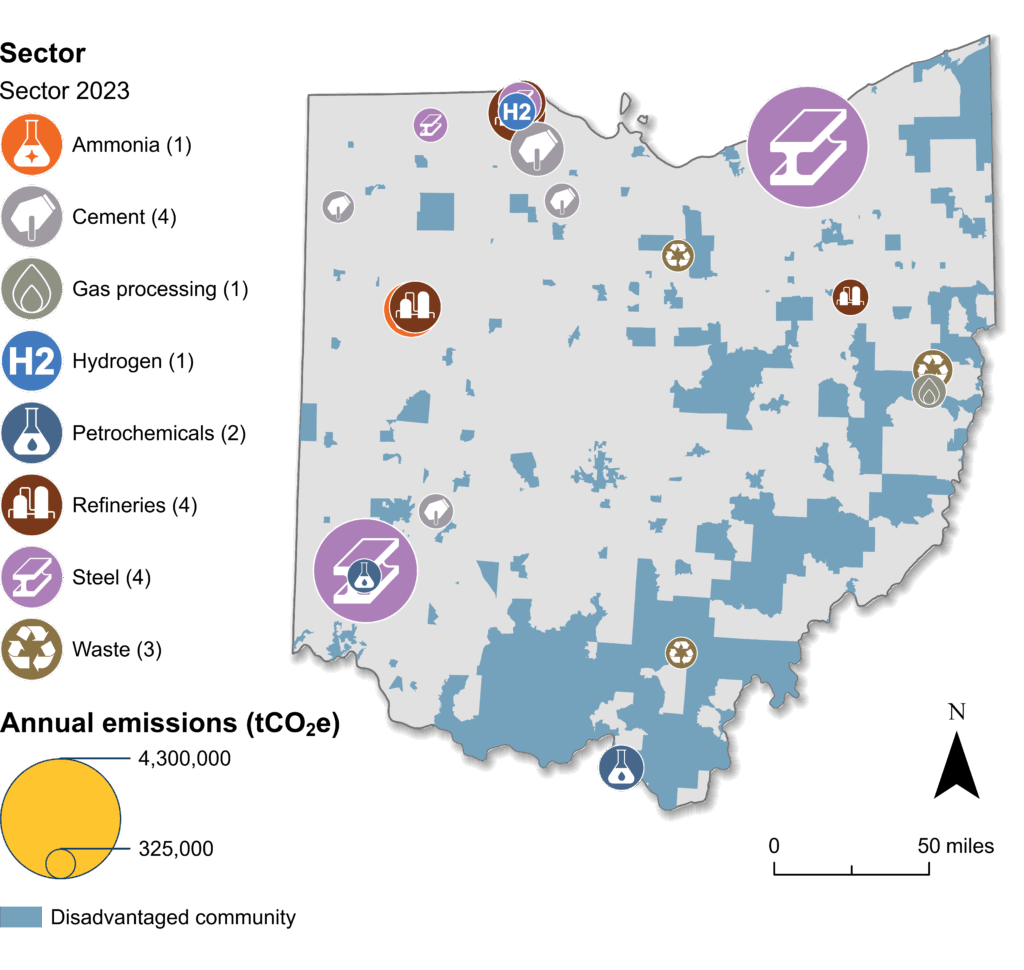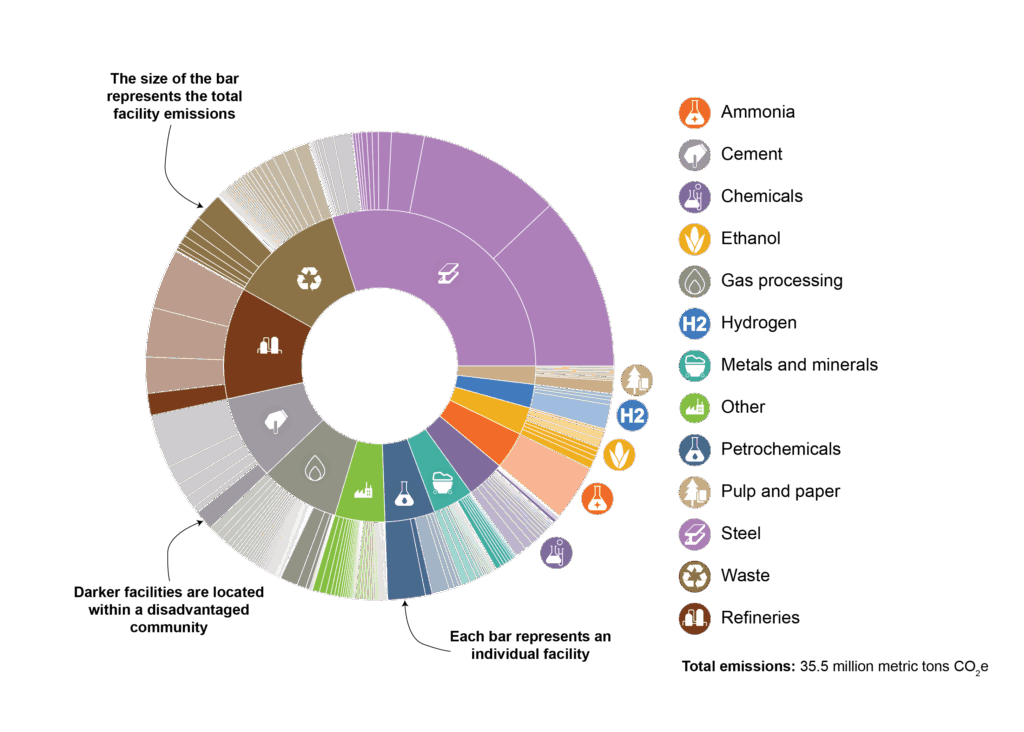Ohio
Ohio’s industrial emissions rank among the top five nationally. The state’s industrial base is remarkable for its diversity, and its emissions profile reflects this. Although steel and other metals account for nearly a third of industrial emissions, mineral production, non-fluorinated chemicals, refineries, and waste processing are also large emitters. Industrial production is concentrated in several metro areas, including Cleveland, Cincinnati, Columbus, Dayton, and Toledo.

- This map shows the top 20 emitters, coded by industrial sector. The size of the circles corresponds to emissions: the larger the circle, the higher the emissions.
- Disadvantaged communities (as determined by the federal government) are shaded blue.

- The inner circle provides a visual representation of the share of emissions generated by each industrial sector.
- The outer circle also indicates the share of a sector’s emissions generated in disadvantaged communities.
STATE ENERGY POLICY:
Examining a state’s broader energy policy landscape is helpful when considering policies to support industrial innovation. Ohio has not established greenhouse gas emissions targets or a clean heat standard. Ohio has established an alternative energy portfolio standard. While these formal commitments are not prerequisites for innovative industrial policy, they can provide a supportive framework. In addition, streamlining permitting and establishing an efficient, transparent appeals process that engages local communities early while giving clarity and assurances to project developers are key components of effective state energy policy. Discussions around innovative industrial policy present an opportunity for broader conversations about state energy policy to ensure a mutually reinforcing strategy.
LEGISLATIVE context & opportunity:
Let us know if you are aware of additional legislation advancing industrial innovation in Ohio that should be featured. The context below is not exhaustive and serves as an example of recent policies and programs and where there may be future opportunities:
- Appalachian Regional Clean Hydrogen Hub (ARCH2): Ohio, Pennsylvania, and West Virginia are part of ARCH2, which will pair natural gas with carbon capture to produce clean hydrogen supported by West Virginia’s Class VI well primacy status. Dependent of the outcome of the regional hubs, there is strong interest in building a clean hydrogen economy in this region to reduce emissions across hydrogen production, oil and gas development, and industrial manufacturing.
- Carbon management technologies are another opportunity to reduce industrial emissions in the state. Learn more about the economically feasible subsectors in Ohio and facilities that qualify for the federal 45Q tax credit.
- A factsheet by the Renewable Thermal Collaborative identifies electrification of Ohio’s steel, ammonia, and plastic recycling subsectors as opportunities to reduce emissions significantly.
Explore recent legislation in Ohio and all 50 states by clicking on a specific year: 2025 legislation, 2024 legislation, 2023 legislation.
